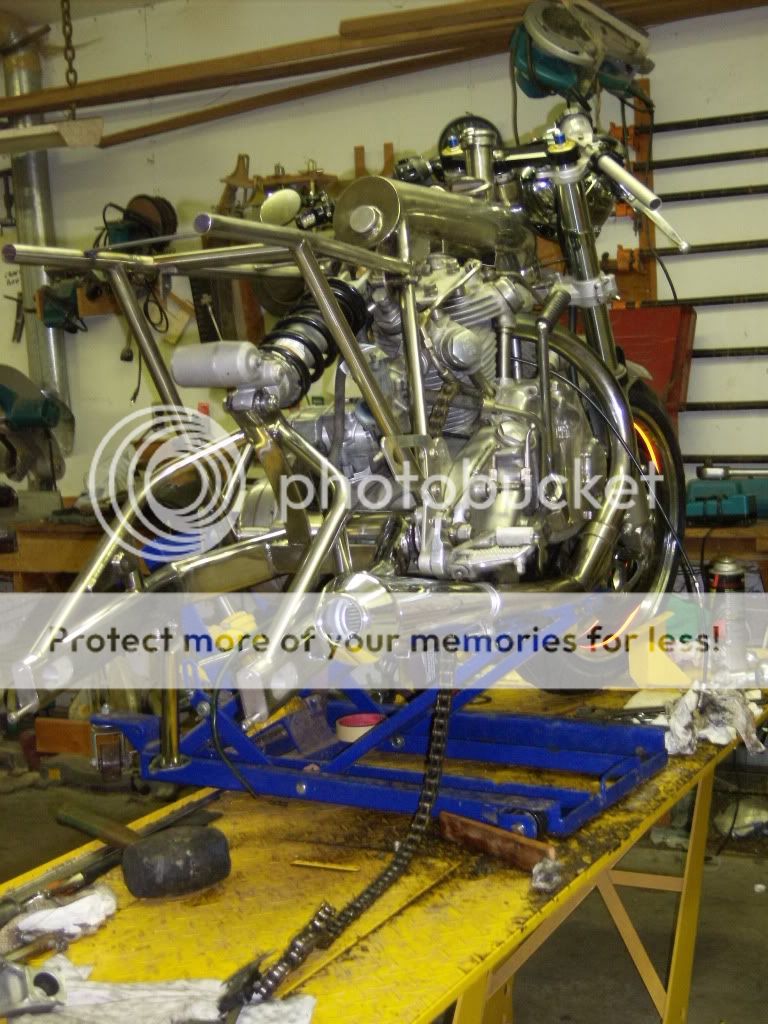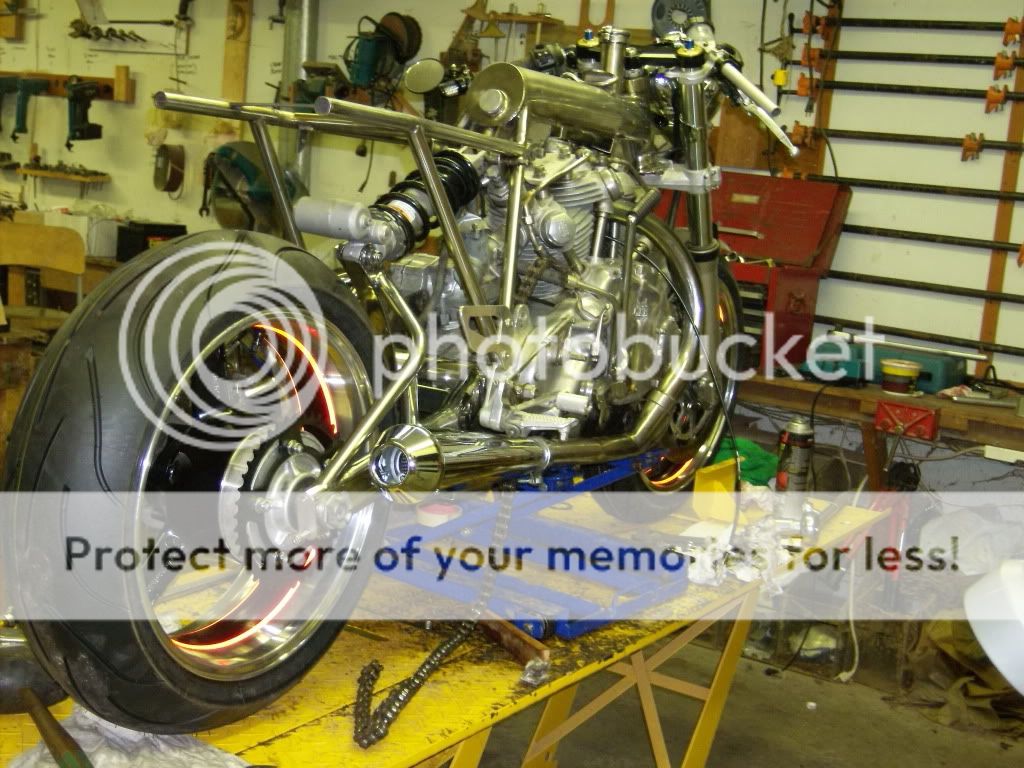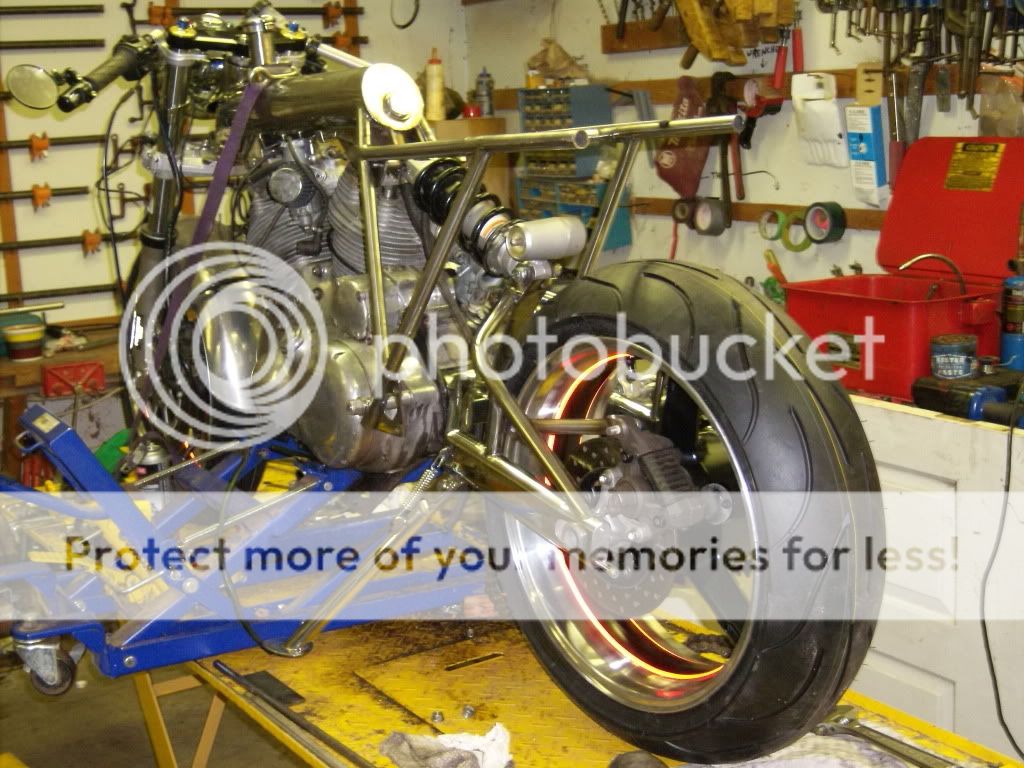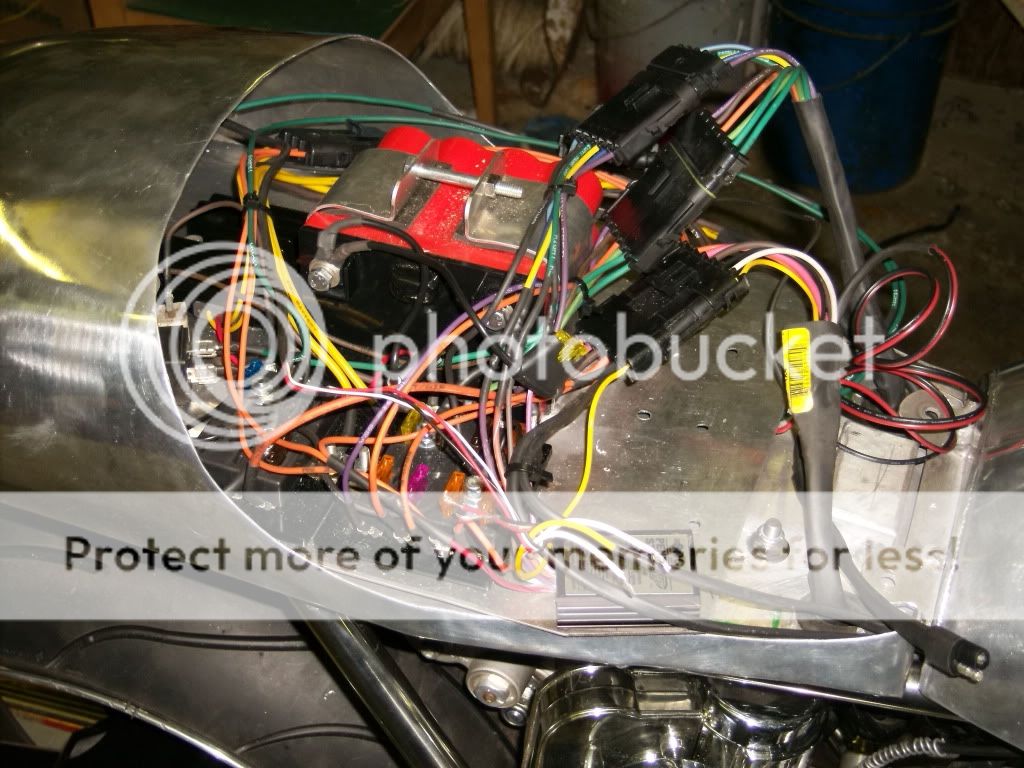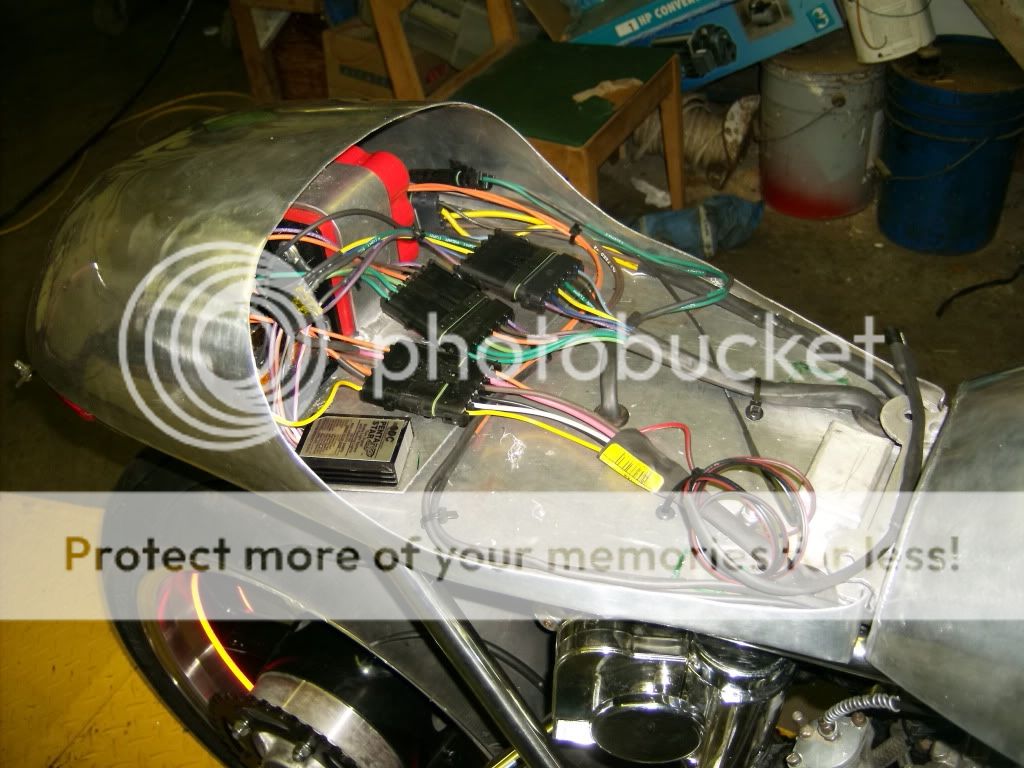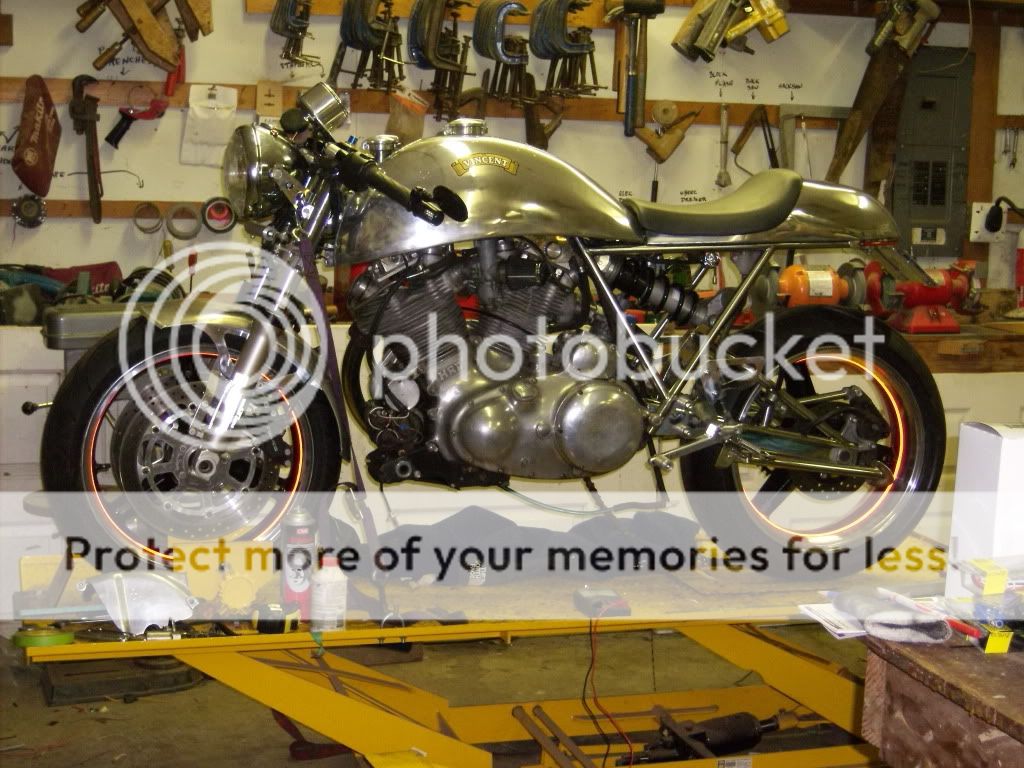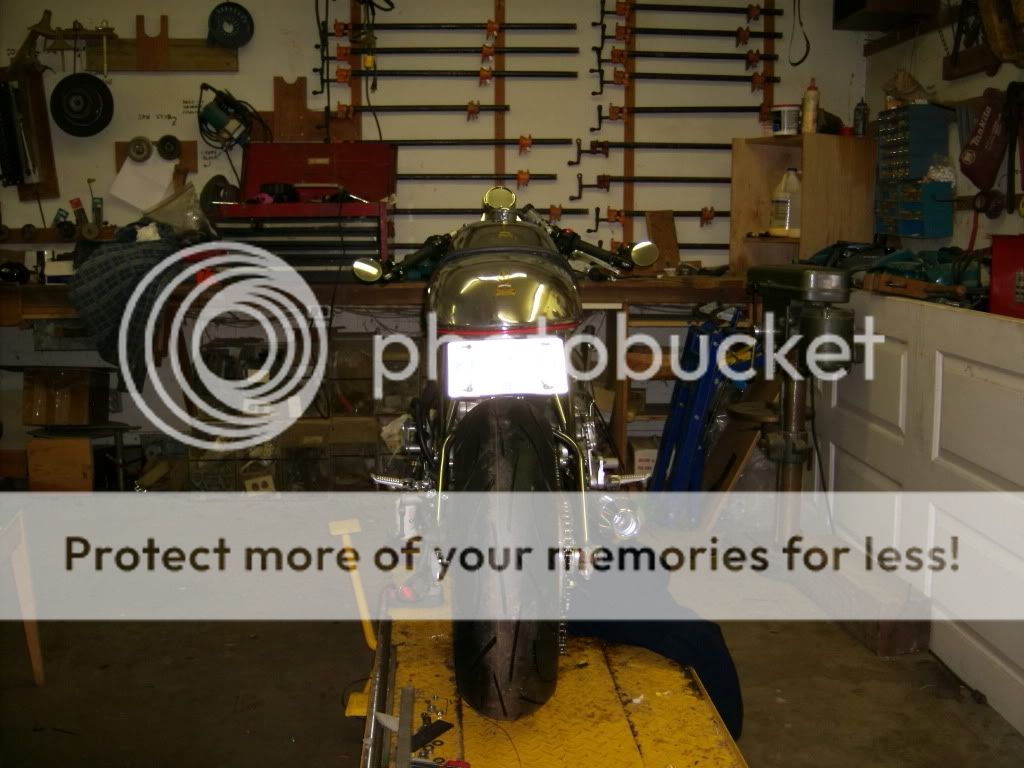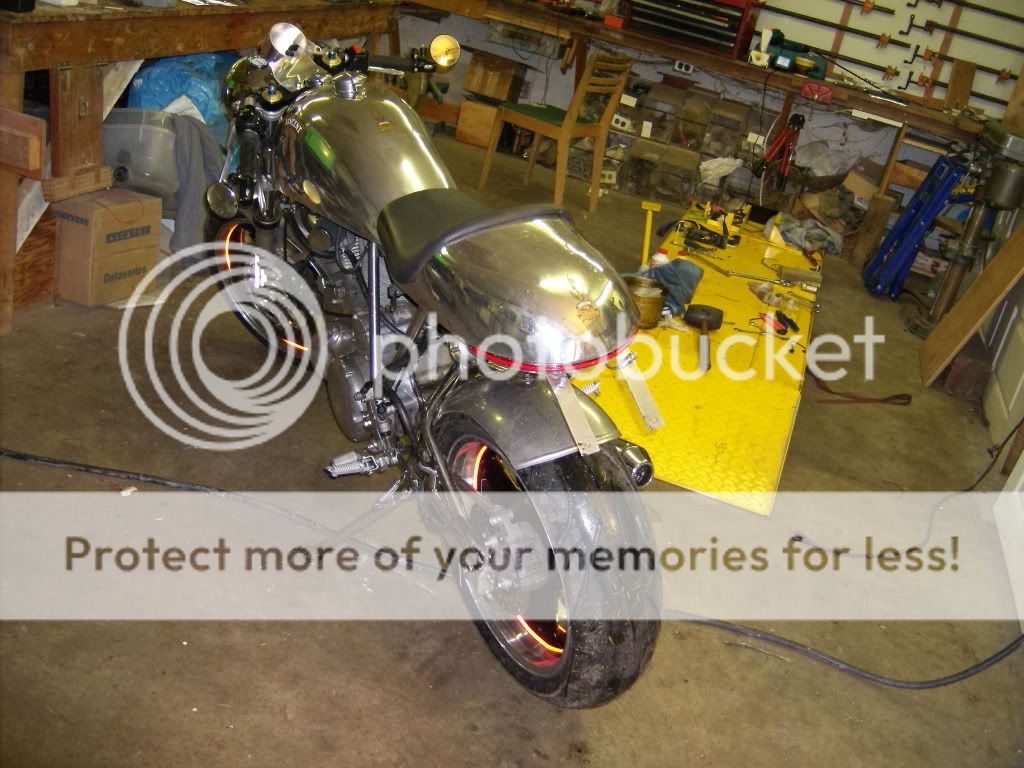The electrical turned out to be a lot more work than anticipated. My friend Tony Cording thinks the cowl wiring looks like spaghetti. I didn't take a photo of whats inside the headlight, it looks more like vermicelli with about 60 wires or so, many of them tiny, especially the headlight /tach wiring.
The wire was provided free of charge by another friend whose occupation is building hotrods. He gets wiring kits in prelabelled wire. It is done by ink stamp, every three inches along the insulation. It is generally a bit heavier than needed for the electrical loads on a motorcycle, but very nice stuff. The pieces I used are from his leftovers, offcuts from a foot to maybe ten feet long.
The disconnects are auto stuff too, Pico Weather Pack sealed type. They are a bit bulky but fit the situation, in that I only have about 1/2" height under the seat for the three of the couplers. These couplers are wide but just less than 1/2" thick. There are three additional smaller weather pack couplers tucked in beside the battery, not fully visible in the photo. So the tray slides out for access to fuse boxes and other electrical items then the couplers come away if the tray is to be separated from the bike. The harnesses stay with the bike but the seat pan can be removed easily if needed, just a couple of zip ties to cut and the harnesses come free.
I decided not to do the usual "one fuse does all" British bike wiring job, so there is a bit of a maze of wiring. The larger 8 circuit fuse box is energized with the key switch in the first position, both it and a second six circuit fuse box are energized with the key switch in the second position. This way the ignition is separated from the Alton output, which if connected to a common fuse box will keep the engine alive after the battery is disconnected thru key switch. In other words, you cannot shut the bike off with the key unless these items are separated.
It's a more complicated wiring job than the one or two fuse job would be, but those wiring setups can make you crazy when it comes time to track a problem.
I have one Rapide that kept blowing its single 20 amp fuse. Sometimes it wouldn't blow the fuse, it would drain the battery instead. It has coil ignition so once the battery is dead, you and the bike are probably coming home in the back of a pickup truck.
The previous owner quit riding it because no one was able to track the problem and riding it was a nightmare. Prior to all of this, in about 1984 he had our local expert do a much needed and very extensive stem to stern mechanical redo of the bike from crankpin out, with a gazillion major and minor parts replaced. The bike was also rewired at that time, but the one fuse electrical wiring job was the downfall. When I got the bike it was suggested to me that the Lucas generator was likely the root cause of the problem . I replaced that with a Chinamo and for awhile thought the problem was solved, but it happened again and again. One night while out riding (always close to home and preferably uphill at this point!!)I noticed a spark coming from the headlight switch.
That had been the problem for 20 years, but was intermittent and very difficult to track without separate fuses. Had the headlight circuit been on its own fuse, it would have been a relativley easy find, plus it would not have left the previous owner stranded on the road again and again. So he would have had 20 years of enjoyment from his newly rebuilt bike instead of twenty years and just 550 miles of agony!
The upside is that without the one fuse wiring job and the electrical problem it masked, the previous owner would never have sold me the bike!
Anyway, I'm sure there are improvements that could be made on this wiring job, but I did spend a long time looking at the situation to figure out a good way to do it so that the wire is pretty much out of view and yet things can come apart quickly if necessary.
A couple more small things to do then hope for some good weather next week for a trial run. Final weight is 172 rear 178 front, 350lbs total, helium not yet in the tires Howard, oil in trans only.
I was hopeful for 360dry, so this is great. Not sure why it is 40pounds lighter than a gsxr1000, maybe I have forgotten something?
